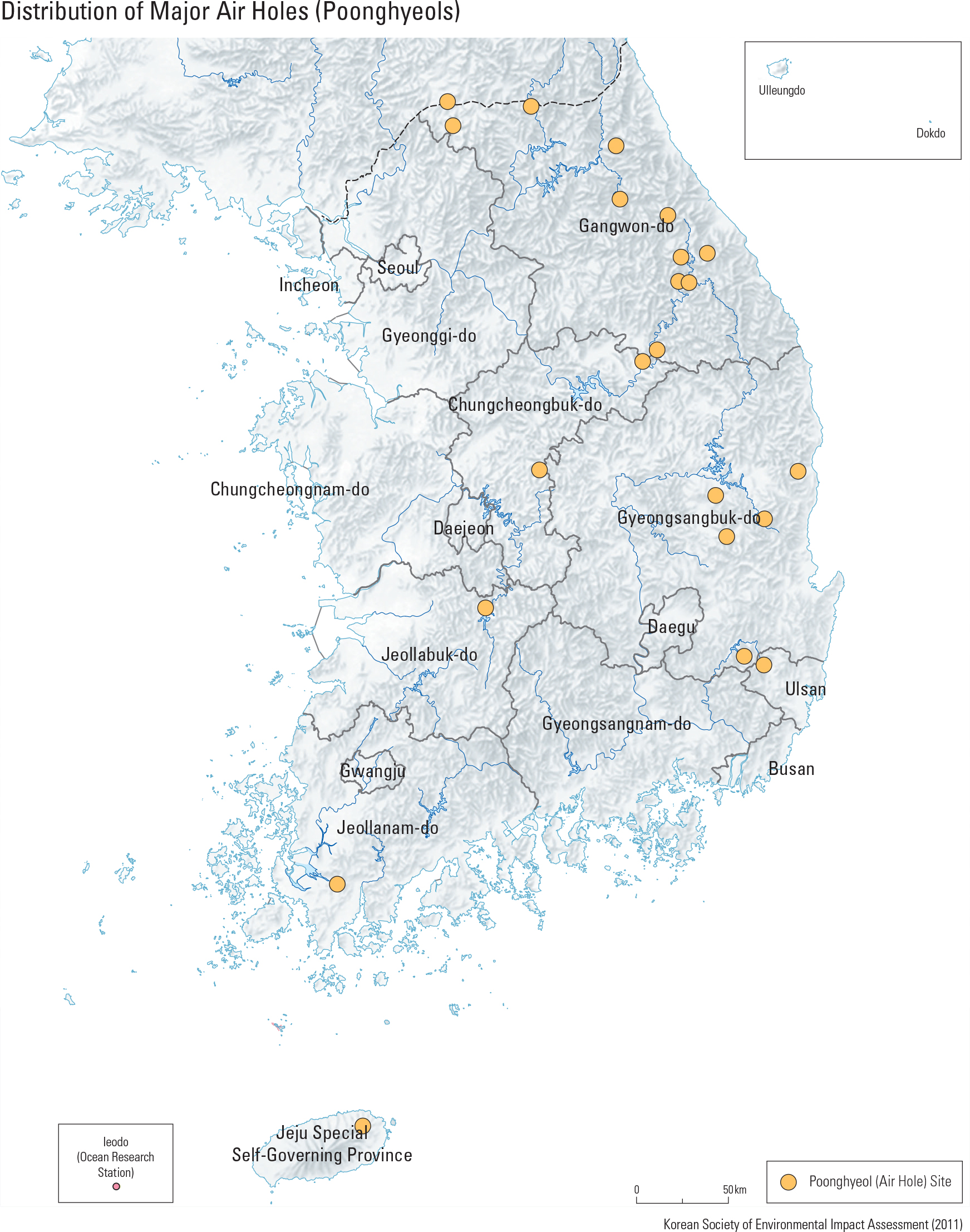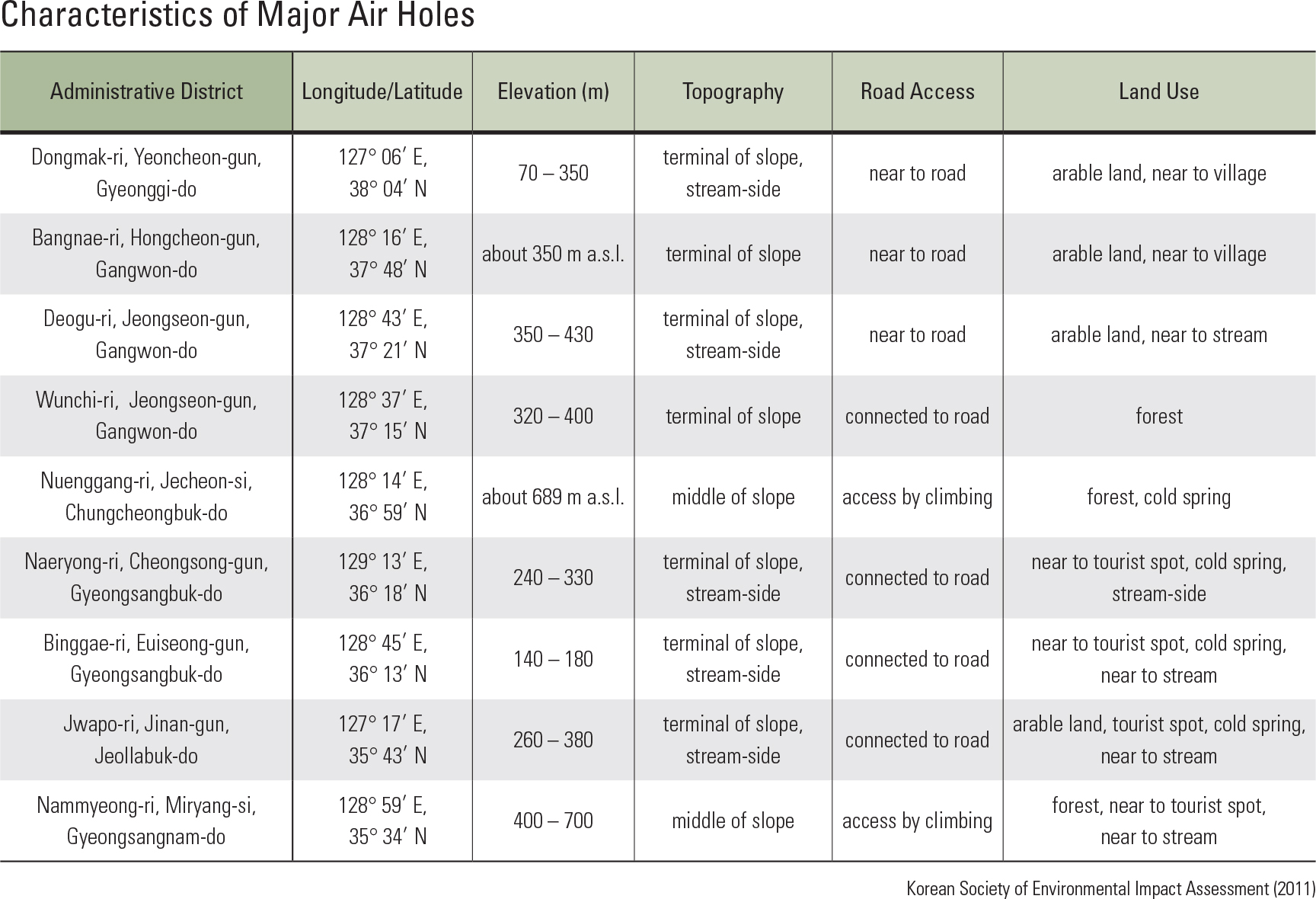English II
A poonghyeol (air hole) can be described as a wind hole or an air hole in which the air blowing out of the hole is cooler in summer but warmer in winter than the surrounding air, exhibiting a unique micro-meteorological condition. Poonghy- eols are normally found on the foothills of moun- tain, in which periglacial landforms, such as talus, block elds, and block streams on steep slopes of mountains prevail. Poonghyeols without ice for- mation in the summer are often called wind holes or wind caves by local people. Poonghyeols that carry ice or frost until summer time have different names, such as ice valley, ice cave, ice hole, and summer frozen ground, but they are also types of air holes. Few poonghyeols, which come with cool air as well as cold ground spring water with year round temperatures between 20 to 25 ̊C are called cold springs. The Korea National Arboretum investigated the environmental characteristics of nine poonghyeols and analyzed them on the basis of their geology, landforms, climate, soil, hydrology, vegetation, roads, footpaths, land-use, and management sys- tems. Poonghyeols in Korea are normally found on old geological substratum, such as a Creta- ceous layer, and on northwest- and north-facing slopes at the terminal point of steep talus, block elds, and block streams, and can be categorized into three types (talus, cave, and sink). Poonghyeols were mainly formed in the peri- glacial environment of the Pleistocene Epoch, Quaternary Period of the Cenozoic Era, when the climate was much colder relative to today. A large number of boreal floristic species, which are sensitive to global warming, inhabits the poonghyeols. These arctic-alpine plants migrated from the north in search of warm, suitable habi- tats during the glacial periods, especially during the Last Glacial Maximum, and later, cold-loving plants grew in the poonghyeol areas, where cool summer micro climates exist. Poonghyeols have served as both glacial and inter-glacial refuges for arctic-alpine plants.The poonghyeol at Hongcheon-gun of Gang- won-do, for example, in which the arctic-alpine evergreen shrub mountain cranberry (Vaccinium vitis-idaea) isolatedly grows at the southernmost and lowest location on the Korean Peninsula, has biogeographical value as a potential future gene pool site for cold-tolerant or cryophilous flora. Under global warming conditions in the future, this poonghyeol site could function as an excel- lent conservation area for northern floristic ele- ments such as the mountain cranberry
page_2 |



